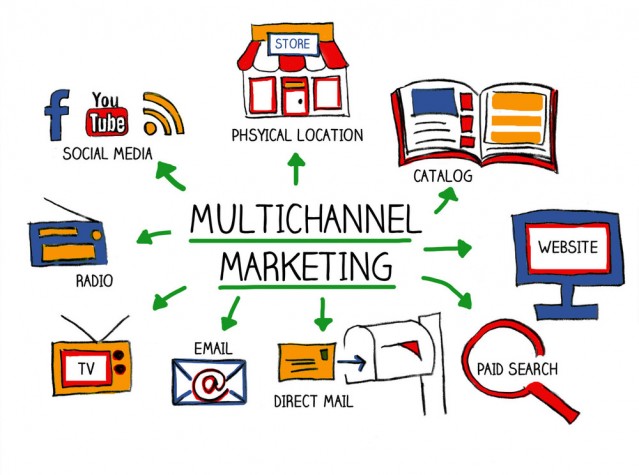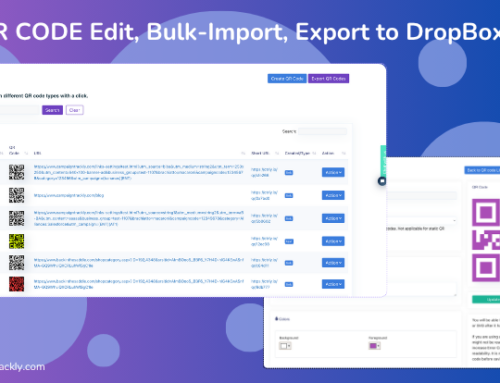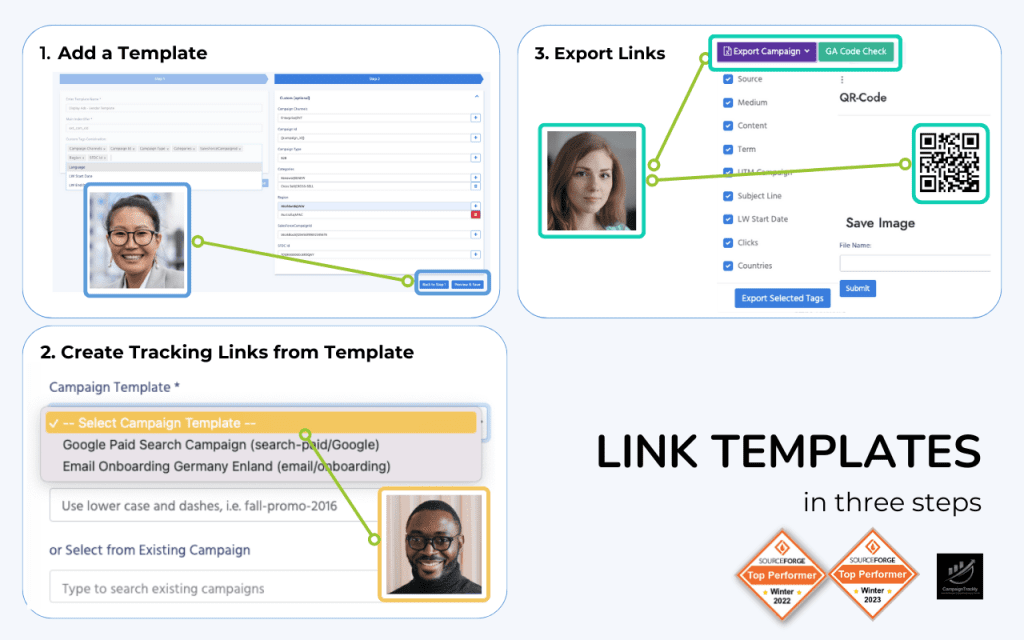This blog looks at five common marketing metrics related mistakes that could diminish significantly the impact of your marketing efforts.
Rumour has it that marketers today are “lucky” because there are so many promotional channels they can use to connect with their audiences. But the question is – does more always equal better.
The challenge with “multi-channelling”:
[icon type=”fa-angle-double-right” color=”#999999″ size=”16px” style=”plain” link=”” new_window=”true” ] With so many promotional platforms already in the marketplace and new ones sprouting every day, identifying what works and what doesn’t isn’t a long-lasting constant that can be applied to all campaigns at all times. This new reality, however, doesn’t change the fact that we are still expected to continue to drive more sales. [icon type=”fa-angle-double-right” color=”#999999″ size=”16px” style=”plain” link=”” new_window=”true” ] What brought fabulous results 6 months ago, might well be old news today.- To stay ahead of the competition we need to be able to react quickly to the fast-changing customer preferences.
- This pretty much means we need to push more campaigns out there and promote assets on as many channels as we can to cover all our grounds
- It also means that we have to be very vigilant about monitoring and optimizing everything, to keep budgets and resources in check.

- We have to split our ever thinning budgets & resources into more spending pockets.
- To justify our spend, we need to apply consistent success tracking strategies that measure effectively both channel and asset ability to promote individual campaigns.
- Campaign tracking was easy when we were dealing with one or two promotional channels and we could use the likes of a manual Google URL builder to add a few tracking parameters to a handful of pages.
- With the ever growing amounts of inbound and outbound campaigns and channels, tracking becomes insurmountable, unless we automate. So measuring the results of our efforts is now yet another bullet point on our long list of to-dos that needs to be planned, sourced, and integrated into our campaign implementation process.
The challenge with marketing metrics
Since most of our time goes into preparing and pushing acquisition and nurture campaigns out of the door to meet our monthly goals, tracking often doesn’t make it to the top of our to-do list. Or, we think that we are tracking all the right metrics, assets and channels, but we actually aren’t.
The truth is that focusing on the right marketing KPIs (Key Performance Indicators) is instrumental to a marketer’s success and should be an integral part of every campaign’s rollout process.
Defining select primary metrics such as campaign traffic (broken down by promotional channel – source and medium), goal completion (number of form-fills, signups, registrations, purchases, etc.), cost per lead acquisition and conversion rates helps set up a well organized and data-driven approach to driving results.
Without setting up some ground rules and focusing on what’s important in a campaign or what the expected results are, it is hard to identify bottlenecks or apply remedial actions to ensure optimal performance and budget spend.
There are a number of substantial benefits to using a metrics-driven approach – from saving resources, to making sure that you are maximizing your campaign’s reach and conversions potential, to not letting you waste your money on ads and channels that are not a fit.
But what happens when we don’t define the right set of metrics that will keep us focused and will help us to keep our eyes on the prize so we can get the best results possible?
Not focusing on the right marketing metrics could cost us our next campaign budget:

1. Tracking conversions, but not which channels/assets they came from
Some marketers focus only on setting up and checking the number of online form conversions. The way they usually do it is by creating a “Goal” in Google Analytics and using the report associated with it to count the number of form fills or leads that have been generated for the period.
Why is this a mistake? Sometimes a channel just might not work, and you won’t know that unless you are tracking it.
When that happens you might lose some important resource and budget-related benefits:
- If a channel is not a fit, this means that you can stop using it for this particular campaign and save time by not having to create extra social posts or visual content. Time, by the way, which you can use to add more “fire” to the channels and assets that work.
- This could also mean that something might be wrong – like, the Facebook pixel wasn’t set up correctly and now you cannot re-connect with the audiences that showed initial interest.
- Or, it could mean that your PPC campaigns haven’t been setup per expectation, and you are happily getting a large number of conversions, but they are coming from the one market/geography that you are not selling to.
![]()
2. Not tracking the individual social media channel contribution for each campaign
Sometimes we assume that Google Analytics or our social media automation tools will automatically track and segment for us all the traffic coming from Social Media channels for each campaign.
What your Analytics & Social Media tools won’t do
Google will indeed identify and segment traffic coming from Facebook versus Twitter and the rest of your social platforms. And Buffer will tell you which visits originated from its console.
What these tools won’t do though is break down your Twitter traffic by campaigns A, B, or C. They won’t split your Campaign A traffic by social platform type either (Twitter, LinkedIn, Facebook, etc.).
Unless you tell them specifically to track everything with the help of the good old UTM codes, you won’t be getting the granular info you need to access how each one of your social presences is contributing to the success of your particular campaign. And that might significantly misrepresent your performance on those channels and cause you to lose budget for your next campaign.
[quote author=”” source=””]I can tell you that, for example, my “Free Trial” promotion on LinkedIn generates much more traffic than Twitter. Because I am running six concurrent campaigns at this point in time (each one with multiple ad variations across multiple channels), without tracking, I wouldn’t have been able to identify easily which platform offers a better cost per click ratio for this particular campaign.[/quote]Sure, there are a number of other ways to figure out which chunk of the traffic was part of which campaign – you can use multiple analytics tools, separately extract data from your individual social platforms, mix and match reports, export numbers in Excel and process everything there…
But this takes time and will hardly give you the option to see in one place all of your channels and how they are performing so you can make an informed decision about what’s costing you more and what’s giving you your best ROI.
Wouldn’t it be so much easier and simpler just to go to Acquisitions>Campaigns in Google Analytics and view all the insights you need – grouped and stacked nicely together?
If you have this visibility in near-real time, you can take immediate actions to address bottlenecks or optimize budget spend to achieve a more effective campaign performance.
3. Not including email in your tracking efforts
Most marketers spend a large amount of their time creating or updating emails. That is why it is very important to measure this channel consistently and efficiently.
In her awesome guide to campaign tagging in Google Analytics, Annie Cushing specifically warns that unless you set up UTM-based tracking for the URL links in your emails, all of your traffic might end up clumped up into your general “Direct” traffic. Good luck proving that your email tool is actually an invaluable revenue-pushing resource.
According to her, these are the most likely culprits for this issue:
[quote author=”Annie Cushing” source=”http://www.annielytics.com”]- Visits from desktop apps, such as Outlook and Mac Mail, show up in analytics as direct — or medium = (none) — because no referrer data gets passed.
- Visits from webmail providers that default to a secure server (such as Gmail and Hotmail) don’t pass referrer data.
- Visits from mobile often show up as direct because of issues with referrer data getting passed. [/quote]
At the end of the day, your email manager will probably be able to give you the most exact numbers, down to the last cent of the revenue that your individual email generated.
But it all boils down to being able to have a productivity-focused single campaign view so that you can compare easily how your promotional channels and assets stack up against each other without the need to resort to multiple back and forths between tools, reports, and hours-long calculations.
4. Not tracking printed materials
Collateral materials including printed flyers, agendas, and calendars can be a great traffic and conversion driver, especially at trade shows and other in-person events.
[quote author=”” source=””]My experience is with sales catalogs that have brought significant traffic to my web campaigns in the past. Tracking has been the only way to prove that a seemingly expensive ad can deliver a good-sized double-digit ROI.[/quote]Whether you are using a QR code or a simple short link like bit.ly/cool-discount, they need to have the right tracking UTM tags to account for the role that this channel is playing in the success of your entire campaign.
Because print materials tend to be viewed as pricier than other creative collaterals, not tracking traffic coming from this channel might effectively preclude you from securing budget and reaching a substantial slice of your audience next time around.
5. Not tracking traffic coming from partners, affiliates, support, and inside sales
Partners and Affiliates
Partners and affiliates are a great way to give your campaigns a few extra running wheels. If you are spending the time to re-purpose your promotional content and share it with your partners or affiliates, then you will definitely need to justify budget spend and resource allocation. Without tracking, you won’t be able to see how your campaign has been impacted by these important traffic sources.
Support
Another important source to track is your support team.
[quote author=”” source=””]Based on my experience, the support guys know pretty much everything and spend a lot of their time helping customers find their way around your website. Some individuals are even great at generating traffic to certain campaigns and driving conversions. [/quote]If your campaign offers extra value or cross-sells to your existing customers, engaging your support team and tracking their efforts is an excellent way to showcase that Marketing is all about teamwork that drives results. Not doing so will result in missing out on key intelligence, including specific audience preferences and asset performance.
Inside Sales
It’s a good rule of thumb to involve inside sales before your campaign implementation stage. Confirming scoring or lead handover exceptions and clarifying what supporting materials, such as scripts, collaterals, and web pages, will be made available to the sales team is an important part of the process.
While there is always a clear understanding that Sales becomes the legal owner of the lead after they accept it, I have had cases where the sales person might find out that the prospect is better suited for an upgrade or a different solution. In this case, they will probably provide the potential customer with a link to a different campaign page or asset.
Additionally, some sales representatives can generate a lot of traffic to the website via their personalized emails. Tracking the visits and conversions that have resulted from sales activity is imperative. It could signify that the sales team is great at driving event registrations, or that it’s not prioritizing the leads that your campaign has generated. It could even identify a whole new segment that marketing can go after.
In conclusion
The main benefits of tracking your marketing efforts include intercepting potential lose ends, optimizing campaigns, and making sure you have enough data to prove the value of your marketing and showcase the fabulous job you are doing.
Try to avoid the above marketing metrics and tracking mistakes. Integrate campaign tracking into all your inbound nurture and acquisition campaigns and you are guaranteed to be able to showcase your stellar results effectively, as well as justify spend, and secure more budget for your next campaign.
[callaction button_text=”Get Started Today, It’s Free” button_url=”Start for Free” background_color=”#d3e6a5″ text_color=”#535353″ button_background_color=”#78ab26″ button_text_color=”#ffffff” rounded=”true”]Are You Looking to Automate Link Tagging & Improve the Quality of Your Marketing Insights? Give CampaignTrackly a go. It can speed up tracking by up to 500% and significatnly reduces reporting errors.[/callaction]










